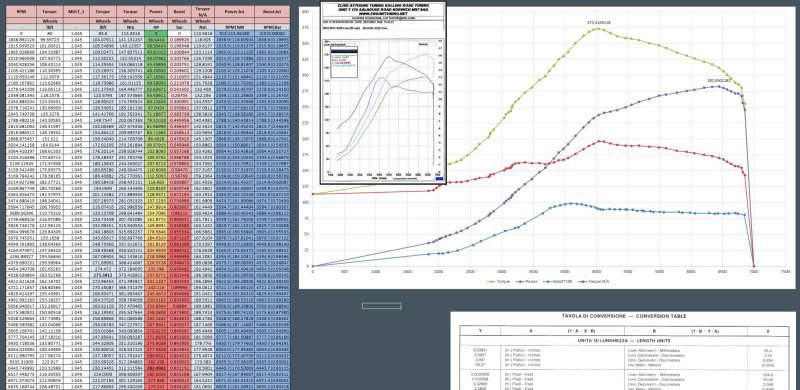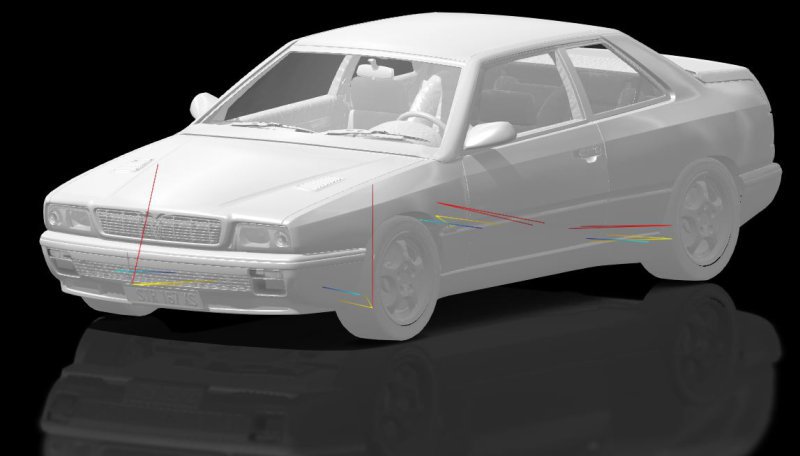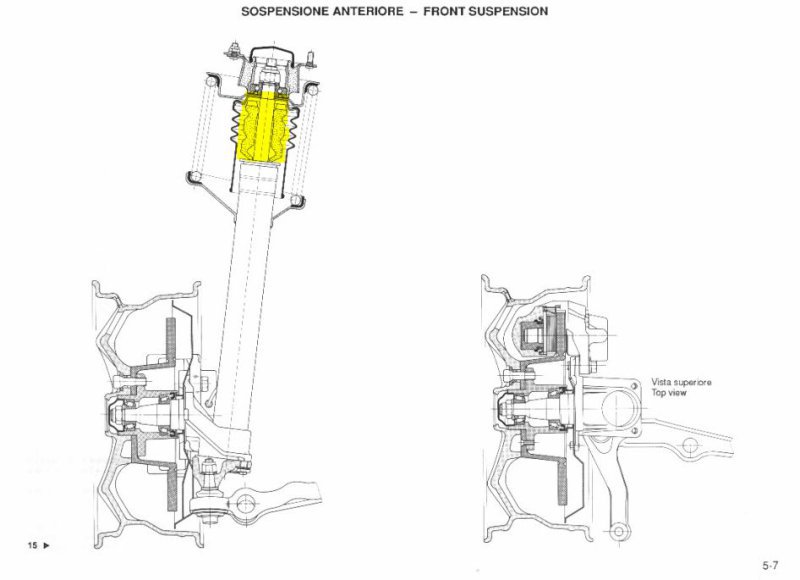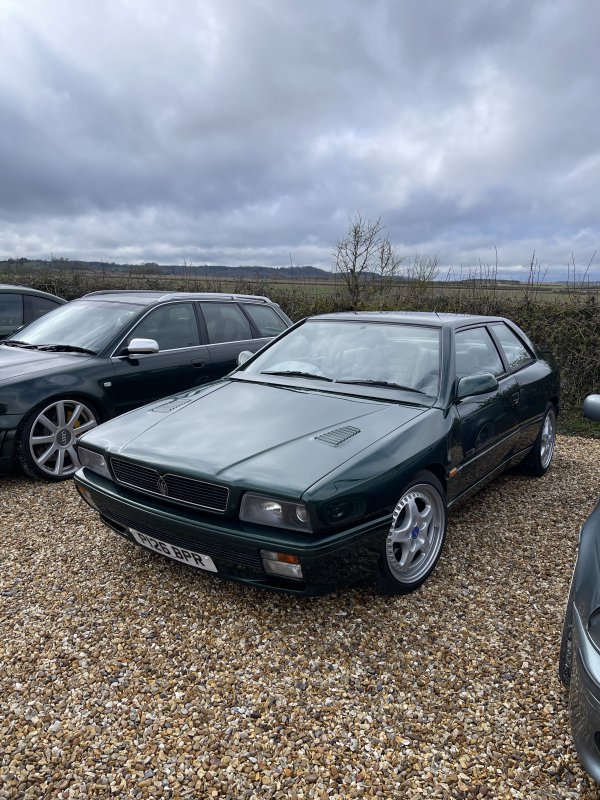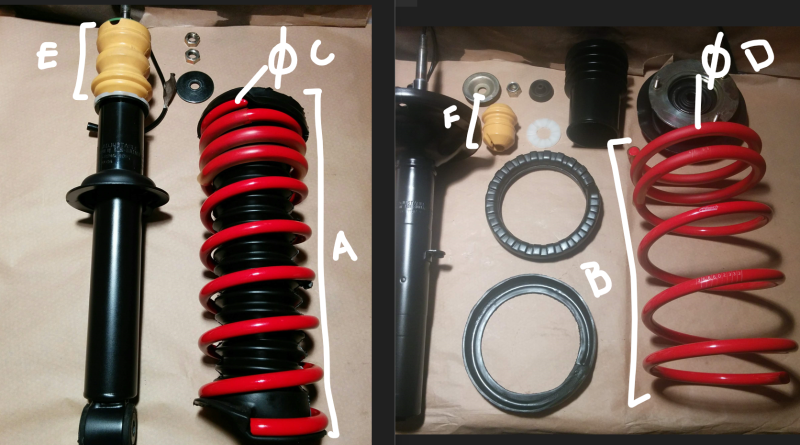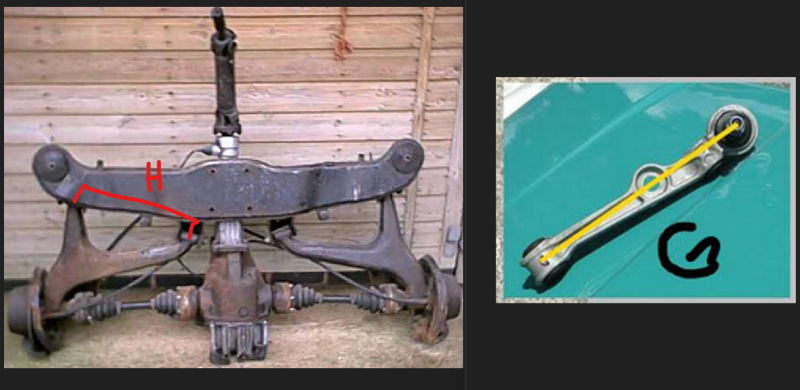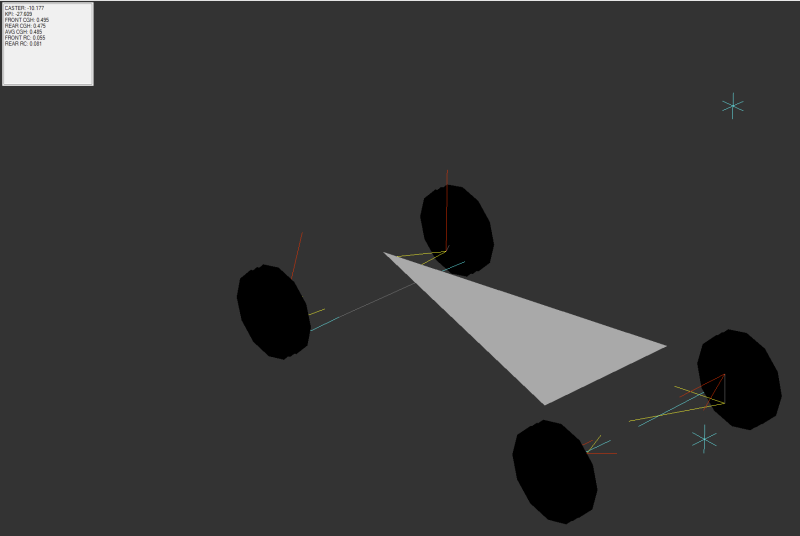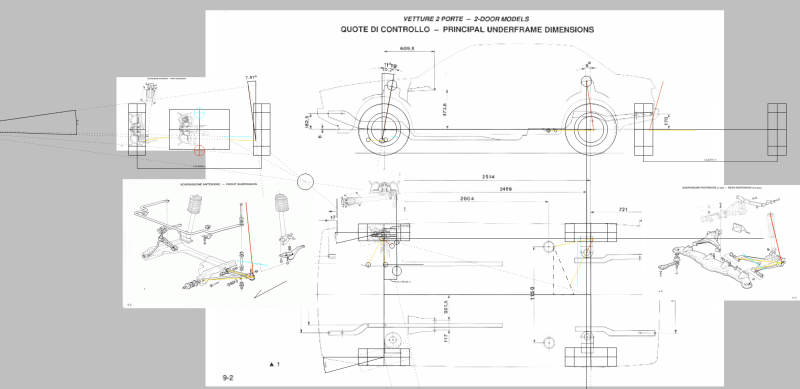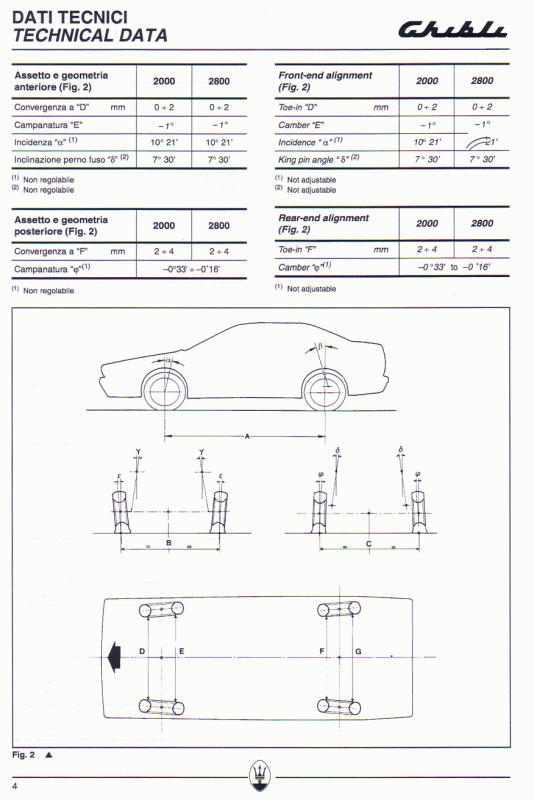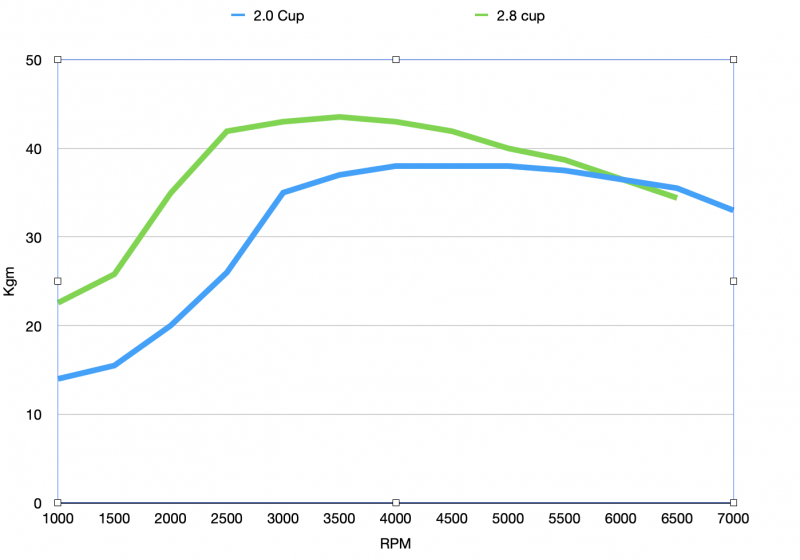Thanks Nayf for the link. You are very lucky to be able to own one. The more I dig into it, the more I admire this hidden jewel.
I have a few easy questions before I throw the hard ones:
- Steering ratio
- Steering wheel turns lock-to-lock
- Does the front shocks sit on the bumpstops in static load? (attached pic bumpstop.JPG)
I have a basic v1 version in-game. I put a few laps in the nordschleife and my first impression is that the tail is quite a bit happy. And it is truly a beast of a car. That engine can easily overcome the rear tires' grip. I can only imagine how it should had been on vintage 90s tires trying to keep RPM about 4500RPM to avoid that short 2nd gear, while negotiating a mountain road. Is it how it really feels?
Well, you tend to push harder a) on track and b) in game than you ever would on the road. I’ve yet to drive mine truly hard (waiting for another damper so another month or two) but, having driven others hard before…
In normal driving, even in the rain, I’ve found the Cup far more easier to drive than the 2.8 models, because there’s slightly less torque and it’s higher in the rev range. With the opposite in the 2.8s it’s conceivably easier to get caught out when it’s wet - the tyres are quite small compared to most cars with that amount of power and torque. It has no traction control, after all.
The difference is when you drive the Cup hard, you’re so much faster and up the rev range, keeping it on boost, it’s truly exhilarating. I can well imagine the margin between control and the local infirmary being very narrow when it’s wet, so I’ve tended not to drive Cups hard in the wet (and why would you?).
The big difference, and the key to the car, is the steering and steering feel. It’s so much more connected at the extremes than a ‘normal’ GT. The steering is low geared (like most 80s/90s) performance cars, but there’s a depth to the steering feedback that provides plenty of confidence. How you’d adequately transmit that into the game, I’m not sure. The rear diff does a magnificent job of keeping you planted in the dry. You can get them sideways, but you have to be committed. It is not inherently an uncontrollable monster, unless your right foot only operates in binary.
There are some drawbacks - the Getrag six speed can be a bit notchy, and the brakes are terrible. Not a lot of initial bite - a bit like 80s BMWs really.
The other that might be hard to get into the simulation is the adaptable suspension, of which there are 4 modes. 1 is comfort, 2 is default and 3 + 4 is where the Cup really shines. It it’s all working well then it really does transform the car, tightening things up. 4 is track mode.
I’ve heard people say it doesn’t make much difference but on a fully sorted car and on a proper drive you really can feel the difference through the steering wheel.
The Autocar test has everything you need, probably more than the manual that came with the car. IIRC I think it has the torque and power curve graphs, which will help.
Here’s mine taken today, the only Cup in Verde Foresta.



